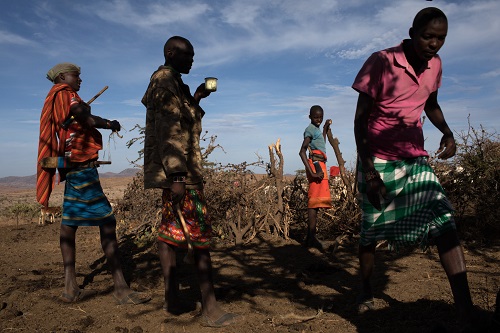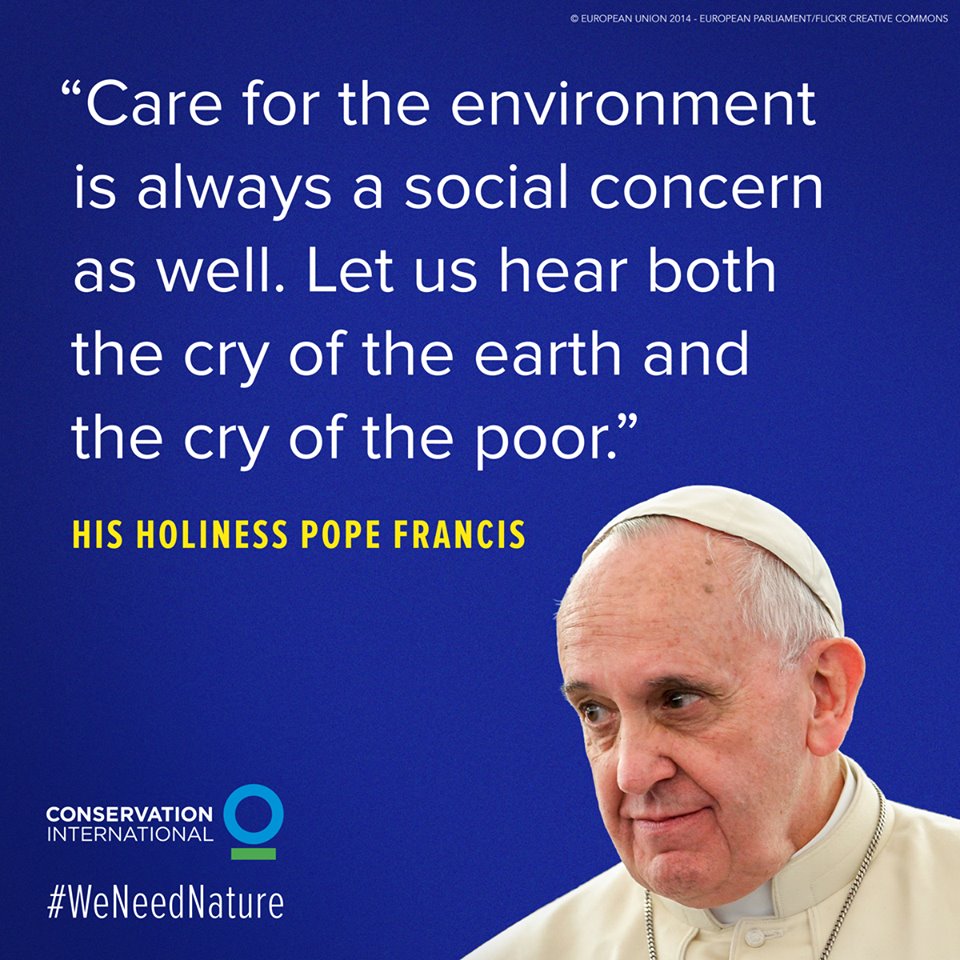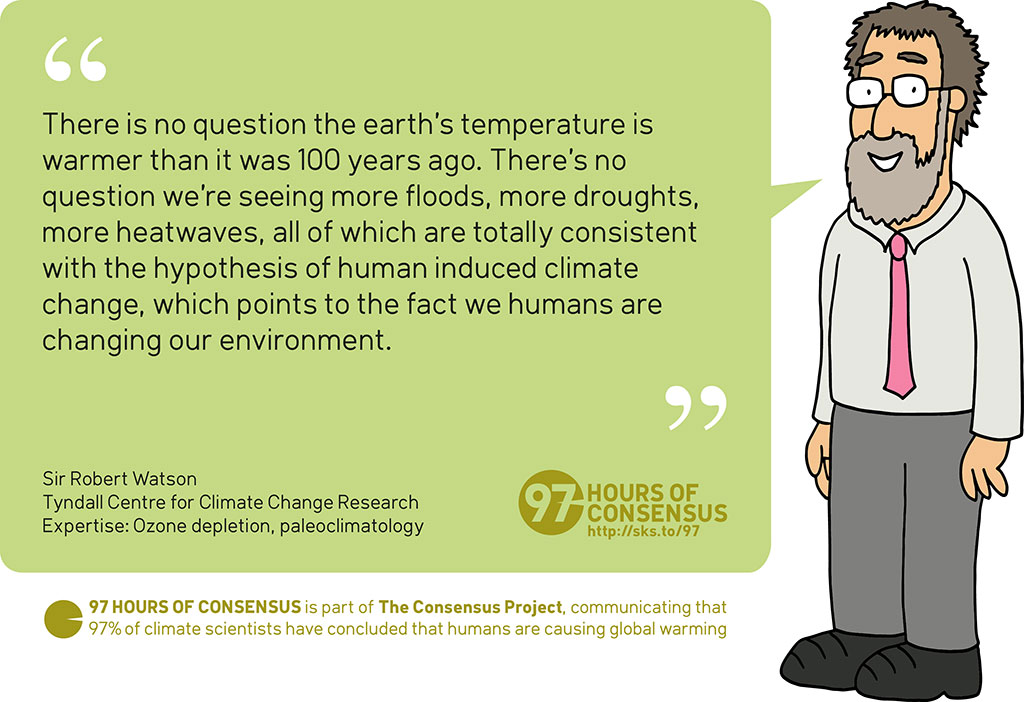2017 SkS Weekly Climate Change & Global Warming Digest #30
Posted on 30 July 2017 by John Hartz
Story of the Week... Toon of the Week... Video of the Week... Coming Soon on SkS... Poster of the Week... Climate Feedback Reviews... SkS Week in Review... 97 Hours of Consensus...
Story of the Week...
Loss of Fertile Land Fuels ‘Looming Crisis’ Across Africa

Some parts of Kenya are now so overgrazed by cows and goats that all the grass roots have been eaten, leaving large stretches of bare earth. Credit Tyler Hicks/The New York Times
More than in any other region of the world, people in Africa live off the land. There are relatively few industrial or service jobs here. Seventy percent of Africa’s population makes a living through agriculture, higher than on any other continent, the World Bank says.
But as the population rises, with more siblings competing for their share of the family farm, the slices are getting thinner. In many parts of Africa, average farm size is just an acre or two, and after repeated divisions of the same property, some people are left trying to subsist on a sliver of a farm that is not much bigger than a tennis court.
A changing climate makes things even harder. Scientists say large stretches of Africa are drying up, and they predict more desertification, more drought and more hunger. In a bad year, maybe one country in Africa will be hit by famine. This year, famine is stalking three, pushing more than 10 million people in Somalia, Nigeria and South Sudan to the brink of starvation.
But much of Africa’s farmland is in danger for another, perhaps simpler, reason: overuse. Fast-growing populations mean that many African families can’t afford to let land sit fallow and replenish. They have to take every inch of their land and farm or graze it constantly. This steadily lowers the levels of organic matter in the soil, making it difficult to grow crops.
Loss of Fertile Land Fuels ‘Looming Crisis’ Across Africa by Jeffrey Gettleman, New York Times, July 29, 2017
Toon of the Week...

Video of the Week...
NASA Laser Reveals Miles of Greenland Ice Loss
What if you could measure a glacier in such detail that you could visualize its surface in 3D? And what if you could compare that view with data from one, two, even 20 years ago? NASA airborne campaigns like Operation IceBridge have been measuring Greenland and Antarctica’s glaciers and ice sheets with a range of instruments for years, including radar, lasers, and high resolution cameras, in order to understand just how our planet’s ice is changing.
This video shows in unprecedented detail how Greenland’s massive Helheim Glacier has changed over 20 years, using data from instruments like the Airborne Topographic Mapper laser altimeter and the Digital Mapping System cameras, which fly every year on IceBridge missions, and satellite data form the Canadian Space Agency’s Radarsat Satellite. IceBridge plans to return to Helheim again in 2018 to carry on its annual survey.
Credit: NASA’s Goddard Space Flight Center/ Jefferson Beck
Release https://www.youtube.com/watch?v=opYSUbjb_wU
Related Operation Icebridge Studies Changes in Greenland’s Helheim Glacier https://svs.gsfc.nasa.gov/4566
Music by http://Soundmorph.com and http://EpicStockmedia.com
NASA Laser Reveals Miles of Greenland Ice Loss, YouTube Video/Climate Slate, July 28, 2017
Coming Soon on SkS...
- 2017 has been remarkably hot thanks to global warming (Dana)
- Underground magma triggered Earth’s worst mass extinction with greenhouse gases (Howard Lee)
- Explainer: California’s new ‘cap-and-trade’ scheme to cut emissions (Zeke Hausfather)
- Guest Post (John Abraham)
- SkS Resources - Easy to remember Short URLs (Baerbel)
- 2017 SkS Weekly Climate Change & Global Warming News Roundup #31 (John Hartz)
- 2017 SkS Weekly Climate Change & Global Waming Digest #31 (John Hartz)
Poster of the Week...

Climate Feedback Reviews...
Climate Feedback asked its network of scientists to review the article, 2017 is so unexpectedly warm it is freaking out climate scientists by Joe Romm, Think Progress, July 19, 2017.
Four scientists analyzed the article and estimate its overall scientific credibility to be 'high'.
A majority of reviewers tagged the article as: Accurate
Review Summary
ThinkProgress published a brief but influential article commenting on record warm global temperature over the first half of 2017. The scientists who have reviewed the article confirm it accurately reports that 2017 is on track to being one of the warmest years on record. Reviewers note this wasn’t as unexpected as the article states, but the fact that 2017 global surface temperatures are that high is a clear reminder that global warming has not stopped or slowed down.
SkS Week in Review...
- 2017 SkS Weekly Climate Change & Global Warming News Roundup #30 by John Hartz
- A profile of award-winning climate scientist Kevin Trenberth by John Abraham (Climate Consensus - the 97%, Guardian)
- Trump pulled out the oil industry playbook and players for Paris by Benjamin Franta Climate Consensus - the 97%, Guardian)
- Explainer: How data adjustments affect global temperature records by Zeke Hausfather (Carbon Brief)
- Study: our Paris carbon budget may be 40% smaller than thought by Dana Nuccitelli (Climate Consensus - the 97%, Guardian)
- 2017 SkS Weekly Climate Change & Global Warming Digest #29 by John Hartz
97 Hours of Consensus...
































 Arguments
Arguments






























Comments